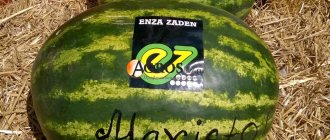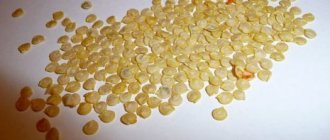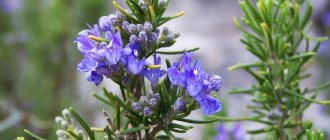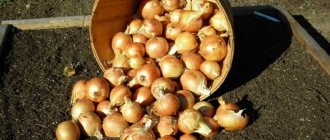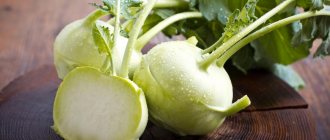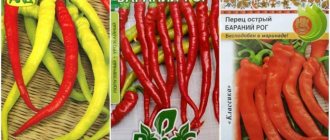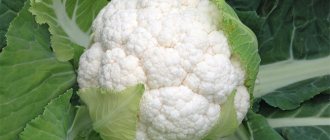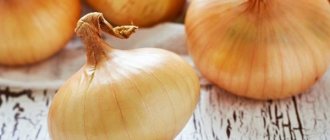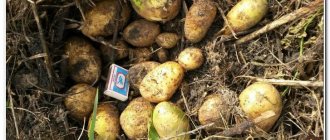Peas are a plant loved by many gardeners, and most importantly, very useful. Valued for its large amount of protein. A few decades ago you could see peas growing in every garden. Now the attitude towards him has changed.
People are used to canned peas. But you don't have to buy it. You can grow peas yourself and can them - it will turn out even better than store-bought ones.
Peas: description
Peas contain more protein than veal and are much easier to digest.
Green peas, in addition to protein, are rich in vitamins:
- A;
- group B;
- WITH;
- RR.
It contains microelements:
- manganese (Mn);
- potassium (K);
- phosphorus (P);
- iron (Fe);
- Lysine is one of the rare amino acids.
The diet of patients with cardiovascular pathologies necessarily contains peas.
Botanical description of peas:
- An annual plant with a herbaceous stem from the legume family that does not require pollination.
- The pea root is rod-shaped , penetrates deeply into the soil and is highly branched.
- The stem is herbaceous, depending on the type, it can be drooping, branching up to 1 meter long, or bushy, not forming branches, approximately 30-50 cm high.
- At the tips of the pea leaves there are tendrils , with the help of which it clings to the support and curls along it. The flowers are often purple or white.
- Pea fruit is a bean in the form of a pod of different sizes and colors. Inside each there are 5-10 seeds with a color corresponding to the color of the flowers of this variety. The surface of the seeds may be wrinkled or smooth.
Like all legumes, peas are an excellent green manure, enriching the soil with nitrogen. Beneficial microorganisms live on and around the roots of the plant, processing and accumulating this microelement.
"Relatives" of peas
There is an interesting plant from the legume family - asparagus peas . All parts of the plant are used in food. Scientific name: Purple four-winged plant. They are also called “winged peas” because of the appearance of the pods. On sale you can find the Thessaloniki variety with fleshy fruits up to 4 cm with the taste of asparagus.
Chickpeas (chickpeas, lamb's peas) are a less popular crop in summer cottages than green peas. Used as a good green manure before planting wheat. In addition, pests do not like it due to the presence of oxalic acid. This annual crop is easy to care for and can be grown in the country and in the field.
Split peas
Peas Chickpeas
Varieties of vegetable peas
Vegetable peas are divided into two large groups:
- Peeling - the inner walls of its pods are lined with a thin “parchment” layer, which prevents the entire blades from being used for food.
- Sugar - which does not have such a layer inside. The varieties of this group have not only peas, but also large, juicy and tasty pods (scapulas) that are completely edible.
In sugar varieties, not only peas, but also pods can be eaten at a young age
It is preferable to plant sugar varieties in summer cottages.
Features of cultivation
Before planting, you need to decide for what purpose you will grow peas. If you want to eat it fresh, you should choose sweet sugar varieties: Ambrosia, Alpha, Zhegalova 112.
Peas are an undemanding plant, they often say about them - they grow and grow, just harvest them. Grown everywhere. The harvest can be harvested all summer . Even in winter, you can grow healthy and vitamin-rich microgreens . Still, some conditions need to be met.
Place on site
The place where peas will grow must be sunny, windless, with deep groundwater.
Peas can be planted next to crops:
- potatoes and other nightshades;
- cabbage;
- corn.
To save space and compact the plantings, radishes and parsley are planted between the rows of peas.
Peas grow well near apple trees, in the circles near the trunks, if there is a lot of sun there. Before planting, you will need to pour a layer of fertile soil mixed with humus to a height of 10-15 cm
Requirements and soil preparation
Correct predecessors for peas:
- potato;
- tomatoes;
- cabbage;
- pumpkin crops.
Let's figure out what soil to plant peas in:
- Like many other plants, peas prefer light soil. To make the soil light and structured, add 1 bucket of river sand and humus to clay and loamy soils.
- Sandy soil does not retain water and fertilizers , so a bucket of clay should be added to it for better moisture retention.
- Deoxidize acidic soil in advance - when digging, add 300-400 g of lime per 1 m2.
- It is better to prepare a bed for peas before winter. When digging, add 5-6 kg of humus, 20-25 g of potassium salt, and 30-40 g of superphosphate per 1 m2 of bed. In the spring, add ash and loosen it.
- To maintain crop rotation, you can plant peas in their original place no earlier than after 3-4 years.
Biological features of peas
Before planting peas, you need to analyze the key features of this crop. It is an annual self-pollinating crop that belongs to grain legumes.
Peas are characterized by a taproot system, which has many branches. Like other legumes, peas enrich the garden with nitrogen.
Peas are a popular crop that many gardeners grow.
The plant has a herbaceous stem. It can be simple or branched and grows up to 2.5 m in length. The culture is characterized by complex, odd-pinnate leaves. Their petioles end in antennae. Thanks to this, the bushes are able to cling to support.
Many people are interested in how peas bloom. The plant has white or purple flowers. They are located in the axils of the leaves, 1-2 pieces each. Standard forms have peduncles with 3-7 flowers that form inflorescences.
Peas begin to bloom 30-55 days after planting. The plant is considered self-pollinating. After flowering is completed, beans are formed. They differ in shape, size and color. Each bean includes 4-10 grains, which are arranged in a row.
Important! Seeds can have different colors and shapes, smooth or wrinkled surface. The shade of the peel corresponds to the color of the flowers of the crop.
When to plant peas in open ground?
Recommendations for planting peas:
- You can start planting peas from the last ten days of April until the beginning of May (depending on the region).
- Shelling varieties of peas begin to germinate already at 2 degrees Celsius , while sugar varieties require 4-6.
- The seedlings will survive frosts down to -6 , although this may reduce the yield by 25-30% and increase the ripening period of peas by up to a week. Therefore, when planting very early, it is still worth covering the crops with film.
- The optimal temperature at which peas grow and develop without problems is 15-25 degrees. Both lowering it to 8-12 degrees and increasing it negatively affects the development of all plant organs.
- Sow peas in several stages with an interval of 10-14 days. The last sowing can be done two months before the first frost, but only early ripening varieties.
Pea sowing time
Peas are planted at the earliest stages, when the soil is most saturated with moisture after winter. This is due to the fact that the plant is moisture-loving. Planting peas later than April 22-25 is not recommended. The culture is resistant to low temperatures; pea seeds can germinate at air temperatures of +1 ... + 2 degrees; young shoots can withstand frosts down to minus eight degrees.
Varieties of red currant varieties.
Find out how to grow basil in your garden https://rusfermer.net/ogorod/listovye-ovoshhi/vyrashhivanie-i-uhod/vyrashhivanie-bazilika-iz-semyan-metody-polucheniya-kachestvennogo-urozhaya.html.
How do peas grow in open ground?
Seed preparation
How to prepare seeds:
- Peas have large seeds, so they are grown by direct sowing, directly into the ground.
- Before planting, the peas need to be soaked - put in a container and filled with lukewarm water.
- Leave for a day, changing the water after 5-6 hours.
- Then germinate - wrap in a damp cloth and keep in it until the seeds hatch, usually 2-3 days.
- To improve germination, you can treat with growth stimulants (for example, Epin) according to the instructions for the drug.
- Dry seeds can also be used for sowing. It is enough to warm them up for 5-7 minutes in a warm (40 degrees) solution of boric acid (2 g/l of water).
Planting peas
Planting pattern:
- rows at a distance of 17-20 cm for low-growing varieties;
- 30-35 cm for tall people;
- distance between plants 5-7 cm;
- plant seeds in a hole at a depth of 3-7 cm, depending on the type of soil;
- Before sowing, water the rows;
- The rows are covered with soil and compacted a little.
To prevent birds from pecking out the peas, the bed should be covered with covering material. Pea shoots will be visible in 7-10 days.
Planting peas before winter
Peas are not a frost-resistant plant, but as an experiment, you can try planting them before winter. To do this, dry grains (the grains cannot be soaked) are planted in frozen ground. Plant according to the same pattern as in spring. This is done to prevent the peas from germinating in the fall.
Sugar varieties are not suitable for planting before winter; they are more heat-loving.
How to calculate the timing of planting peas
Summer residents calculate planting days for peas for 2021 taking into account the weather. So, shoots will appear if you plant the seeds in soil heated to 3℃. But ideal conditions are if the soil temperature is 8-12℃ - in this case, the development of the root system will be better.
To determine the exact timing of sowing peas, you need to consider:
- varietal characteristics;
- climate features in the growing region;
- weather on the day of landing.
It is important to take into account the recommendations of the Lunar calendar, which determines favorable and unfavorable days for the procedure.
Planting peas according to the lunar calendar in 2021
The laws of space control the movement of celestial bodies, human life, and natural processes. Over many centuries it has been determined that the Sun is the source of vitality. The Moon is responsible for the movement of energy from it. This is due to the cycles of the satellite.
The night star affects the rise and fall of temperature, precipitation, ebb and flow. It also affects the growth and development of living cells. Therefore, before gardening, you need to familiarize yourself with the Lunar calendar. In it, astronomers identified favorable days for planting peas in 2021, as well as dates when it is better not to do this.
| Month | Favorable days | Unfavorable days |
| April | 4-10, 13, 14,17-23, 26, 27 | 8, 15-17, 23 |
| May | 1-6, 10-13, 16-19, 22-24, 27-30 | 7, 13-14, 22 |
| June | 2-4, 15-21, 25-30 | 5, 9-11, 21 |
| November | 1, 2, 5-7, 10-17, 19-22, 24-26, 28,29 | 17, 28 |
Plants with above-ground fertile parts should be planted during the waxing phase of the moon. The seeds sown at this time have good germination, and the grown plants are healthy and produce a rich harvest.
And on the Full Moon and New Moon, it is better to postpone manipulations with seed material and soil. During this period, plants are in a dormant state. The phase of the waning Moon is neutral for planting peas in the country in the spring. These days it is useful to apply fertilizers and get rid of weeds.
Landing by region
In some areas in May, warm sunny days have already established themselves, which delight the eye with the flowering of trees and other plants, and in some areas there are still snowdrifts at this time. Therefore, the timing of sowing vegetables must be chosen based on the climate.
If you need to harvest a vegetable during the season, then you need to sow several varieties at once with different ripening periods. In addition, you can plant one type of crop, but with an interval of several weeks.
- South – here they are planted in open ground in the second half of April. The procedure can be carried out until mid-June. It is possible to plant peas before winter. In this case, preference should be given to frost-resistant varieties.
- Ural and Siberia - it is impossible to determine the exact date when it is impossible to plant peas in the Urals and Siberia, because climate is often difficult to predict. It happens that at the end of April it is already warm, and in May there are frosts. Therefore, it is important to focus on soil temperature. Many gardeners choose late May-early June for planting crops.
- Moscow region - before planting, it is necessary to prepare the seed material. The beans should initially be germinated and the soil should be loosened. This approach will increase the percentage of germination.
- Central Russia - the terms in Central Russia coincide with those that are suitable for the Moscow region.
Taking these features into account, you can determine the correct timing of the procedure, which will allow you to harvest a bountiful pea harvest.
Pea care
To get a good harvest of green vegetable peas, you need to follow the rules of agricultural technology:
- Watering. Peas are a very moisture-loving plant. Watering should be timely and should not be allowed to dry out. In the absence of moisture, the flowers and ovaries of peas fall off. Before flowering, watering is required once a week, during flowering - at least twice, depending on the weather. The soil should not dry out.
- Fertilizers. Peas respond and grow well after applying potassium and phosphorus fertilizers (30-35 g/m2) or rotted manure. It is strictly forbidden to introduce fresh manure into beds with peas. It provokes strong growth of greenery to the detriment of flowering and fruit formation.
- Installation of supports. Strong support is necessary for climbing varieties, and desirable for standard varieties. You can make a trellis by stretching a wire (cable) in several rows along the bed and attaching it to the supports. Install supports when the sprouts reach a height of 11-16 cm.
Video about pea supports:
How to care
Agricultural technology and crop care in open ground consists of timely watering, loosening the beds, removing weeds and fertilizing.
Watering schedule
The plant requires watering, especially in hot and dry conditions. In the garden, peas are watered once a week, pouring at least 10 liters of liquid onto each square meter of plantings. When plants enter the flowering and fruiting stage, the amount of watering is doubled.
Top dressing
For the development and ripening of pods, plants require additional nutrition. Before the flowering period, the crop is fed with organic fertilizers or herbal infusions from nettles.
During the period of fruit set and further ripening, plants require fertilizing based on potassium and phosphorus.
Expert opinion
Stanislav Pavlovich
Gardener with 17 years of experience and our expert
Ask a Question
Important! Nitrogen-containing fertilizers slow down the development and ripening of the crop, so they are not used after the flowering period.
Pinching the tops
The procedure allows you to limit the growth of plants and provokes the development of lateral fruiting shoots.
Protection of seedlings from birds
Pea seeds and young shoots planted in the ground attract a large number of birds to the beds. To preserve the harvest, the plantings are covered with a special net, stretched over the beds with peas.
Garter
To ensure that the plants receive a sufficient amount of sunlight and are ventilated, the bushes are tied to supporting structures in the form of trellises or nets.
Soil care
Loosening the beds helps the plant rhizomes receive the nutrients necessary for growth and development and be enriched with oxygen. The event is carried out in conjunction with watering and removing weeds from the beds.
Pest and disease control
With errors in care and unfavorable weather conditions, plants are often affected by fusarium, powdery mildew and rust. For control and prevention, bushes are treated with fungicide-based products.
If the crop has suffered from an attack by the cutworm or pea moth, the plantings are sprayed with insecticides.
Diseases and pests of peas
Diseases and treatment
The main diseases of peas are fungal and bacterial infections, the main methods of prevention are crop rotation.
| Name of the disease | Description and treatment |
| Downy mildew | The disease appears at high humidity and low temperature. May appear at the beginning of the growing season. Light spots appear on the upper part of the leaves , and spores . At the first signs, you need to dust the bed with fluff lime or spray it with infusion of field sow thistle (300 g of leaves per bucket of water, leave for 7-9 hours) twice with an interval of 5-7 days. |
| Ascochyta blight | A fungal disease that appears as brownish-brown spots with a border. Black dots are visible inside the spots - pycnidia with spores. After the spores mature, the mycelium bursts and the plant is re-infected. For spores to germinate, suitable conditions are needed - damp weather, a wound on the plant. Having contracted ascochyta blight, the plant dies . Its fruits become unfit for food. |
| Root rot (blackleg) | Appears with excessive watering and waterlogging of the soil. The fungus attacks the roots of the plant or the root part of the stem, they turn black and rot. The roots stop supplying food to the plant, the green mass decreases, and the bush looks lifeless. At first glance, it seems that the plant does not have enough moisture, but additional watering will only worsen the situation. Sick plants can be easily pulled out of the garden bed . You can avoid it by controlling soil moisture and loosening the top layer of soil. |
| Rust | Serious disease of peas. The fungus gets on peas from milkweed. It appears as yellow spots on the upper surface of the leaf and an orange “cushion” on the underside, from which, when cracked, orange powder—spores—sprays out. Peas infected with rust stop growing. You can cope with the disease by spraying with 1% Bordeaux mixture or preparations containing sulfur. |
Pests and treatment
Not all diseases and pests are listed below, but the main task of the gardener is prevention, the use of home remedies with minimal use of insecticides to obtain a good harvest of this healthy and tasty vegetable.
| Pest name | Description and fight |
| Pea moth | It is also called pea leaf roller. Butterfly with gray wings with a span of 10-12 mm. Its caterpillars cause damage. They gnaw through the walls of the pod, penetrate inside and gnaw on the peas. Each caterpillar damages 2-3 peas during development and does not migrate from pod to pod. To combat this, spray plants with garlic infusion:
Watering with a decoction of tomato tops helps - about 3 kg per bucket of water. It has also been noted that early planting and early varieties of crops are less susceptible to attack by the codling moth. |
| Pea weevil | The beetle is black, 4-5 mm long. It feeds on pea grains. In the fall, the beetles enter the storage facility and overwinter there. Peas infected with weevil can be identified by the presence of a hole with a diameter of 0.1-0.3 mm, dark spots or cavities with a beetle inside. To exclude infected seeds, before planting, you need to keep them in a salt solution (30 g/l of water), discard the seeds that have risen to the surface, and rinse off the salt and dry the seeds remaining at the bottom. |
| Acacia moth (legume) | Butterfly, wingspan 23-30 mm. The damage is caused by caterpillars. They bite into the pod and eat the seeds. Later, they may gnaw the seeds from the outside, wrap them in silk and contaminate them with excrement. If there is a lack of food, they can move to other pods. By harvest time, a gardener may be about 50% without it. As a control, the main ones are planting peas as far as possible from white and yellow acacia and spraying with insecticides (for example, Lepidocide according to the instructions). |
Pests and pea treatment
In addition to various diseases, legumes often appeal to various pests from which the plant must be protected.
Pea moth
The pea codling moth is a gray or dark gray colored pest butterfly. For them, their favorite delicacy is beans-grains in the pods of the plant.
Since the butterfly survives the winter in cocoons underground, the first precaution against its pestilence is to pre-cultivate the soil. After the plant has begun to bear fruit, in the event of a butterfly invasion, it is better to treat it with insecticides.
Pea weevil
The pea weevil is a bean-eating bean-eating insect. While still in the form of a larva, the caryopsis penetrates the valves of the pod and feeds on the contents. If an insect is detected, it should be treated with fungicides and insecticides.
Acacia moth
A light gray butterfly that can destroy half the pea crop. Even as caterpillars, it eats beans inside the stem.
To prevent the appearance of the acacia moth, the ground is plowed and cultivated, and during the period of its appearance, the plants are sprayed with biological pesticides.
How do peas grow at home?
Not everyone has a dacha or the opportunity to spend the whole summer there. But you can enjoy fresh green peas by growing them at home. Moreover, the agricultural technology for growing peas at home using closed soil is almost no different from growing them in the garden. It is recommended to choose only low-growing varieties.
Growing technology:
- Preparing soil and containers. Fertile, loose soil is required. They buy ready-made soil mixture in the store or prepare it from garden soil with the addition of sand and humus in a 2:1:1 ratio. A flower pot or container is used as a container for planting.
- Choosing a location. First, while the seeds are sprouting, it is better to place the container with the future peas on a warm windowsill. Later, after transplantation, it is better to take large containers to a sunny balcony or loggia. In spring, the temperature and humidity there are more comfortable for the growth of green peas.
- Landing . To save space, peas are planted more often at home than in the garden. The distance between rows is 4-6 cm, between peas 1-2 cm. Sowing depth is 2-3 cm. When the seedlings have grown and become strong enough, they need to be planted in large boxes with a distance between rows of 15-18 cm and between plants - 5- 7 cm. After transplanting, water thoroughly.
- Care at home. Care is almost the same as in the garden. When the sprouts reach a height of 15-17 cm, you need to tighten the mesh or install supports. Water and loosen in a timely manner. Apply potassium-phosphorus fertilizers.
Types of Peas
Before planting peas in open ground, you need to choose the right plant variety. There are several popular varieties of culture.
The peas are blooming quite beautifully
Green
It is an annual plant that has green pods and grains. The culture is intended for consumption.
Green peas contain many vitamins and minerals. The plant is also considered a real storehouse of vegetable protein. As the seeds mature, the amount of valuable components increases.
For reference! It is especially beneficial to eat green peas fresh. It helps improve the functioning of the digestive organs and saturates the body with valuable substances.
The plant is unpretentious. Growing and caring for peas in open ground does not cause any difficulties. If agrotechnical recommendations are followed, the crop produces an excellent harvest. Of course, when cultivating, you need to take into account the characteristics of a particular variety and choose the right plant for the region.
Yellow
This is a popular member of the legume family. Yellow peas bloom in June. The plant is characterized by yellow inflorescences.
This is a dicotyledonous pea that has a smooth or oval shape. The plant has a climbing stem that is prone to lodging. The fruits of the crop are suitable for processing and consumption.
Harvesting and storing peas
When to harvest:
- The first pea crop is harvested 20-25 days after the main flowering with an interval of 1-2 days.
- In most regions, brain varieties are harvested after 23-25 days, the rest after 18-22 days.
- On the “scapula” (the pod is used as a whole) - after 10-12 days. The lower pods will sing first.
- During the fruiting period, with good care and suitable conditions, up to 4 kg can be harvested from 1 square meter.
- Early ripening varieties will yield 3-4 harvests; late varieties can be harvested up to 8 times.
- Constant harvesting stimulates fruit formation.
After harvesting, the pea tops are placed on a compost heap. But it is better to chop it on the spot and plow (dig) into the soil together with the roots. This green fertilizer improves the structure of the soil; on an area of 1 hectare it can replace the application of a ton of manure.
Peas will be an excellent predecessor for any garden crops.
They will grow especially well after peas:
- nightshades (potatoes, tomatoes, eggplants);
- all types of cabbage;
- cucumbers;
- zucchini;
- pumpkin;
- root vegetables (carrots, beets).
You can preserve the pea harvest in different ways:
- freezing and preservation of sugar varieties;
- drying of peeling varieties;
- Dried peas can be used to make pea flour.
Peas - fertilizer for the soil
Peas are able to enrich the soil with nitrogen compounds. The tubers of the crop, formed on the roots of the plant, contain microorganisms that absorb the nitrogen necessary for the plant from the air.
At the same time, it receives mineral salts and water from them. Thanks to this valuable property, peas easily grow in depleted soils. And after the plant dies, it leaves soil enriched with nitrogen.
Thus, the soil does not require additional application of manure. For other crops, peas are an excellent predecessor.
Types and varieties of peas
Peeling varieties
These varieties have a rough parchment layer on the inside of the pod. It is impossible to chew it, so only the peas themselves are eaten. They are grown by large agricultural enterprises for further sale in dry form.
Popular varieties:
- Dakota . Early ripening variety. It takes 35-45 days to grow to maturity. Gives high stable yields. Plant height up to 50-60 cm. Pod 8 cm long, 7 peas. Suitable for harvesting with agricultural machines.
- Vegetable miracle . Early high-yielding variety. (55-65 days before ripening). The length of the pod is 8-10 cm with ten peas inside. Suitable for canning. The height of the bush is up to 50 cm. Feature - they need to be planted at a distance of 3-4 cm from each other, they will intertwine and form a “pea wall”, so no supports will be needed.
- Dinga . Mid-season (65-75 days before maturity). The stem grows up to 90 cm and requires support. A 10-11 cm pod contains 9-10 seeds. Suitable for canning.
- Somerwood . Mid-season variety (80-90 days) with stable yield in any year. Heat resistant. Height up to 60 cm. Pod 8-9 cm, seeds 7-8 pieces. Suitable for growing without watering.
- Geoff . Medium late (90-105 days). Stem up to 110 cm, supports required. A bean up to 8 cm long contains 8-9 peas. Harvesting once when 70% of the beans are ripe. Suitable for freezing and canning.
- Bingo . Mid-early (50-60 days). High-yielding variety under any conditions. Heat-resistant, can be grown without irrigation. Stem 55-70 cm. Coarse-grained beans.
Sugar varieties
They do not have a parchment layer, they are fleshy and contain a lot of juice. Used for fresh consumption - to eat fresh vitamins or on a “spatula” - in its entirety. These same varieties are used for preservation.
Popular sugar varieties:
- Ambrosia . Early ripening variety (maturity occurs in 50-60 days) 60-70 cm long. Support is needed. Unripe pods with seed rudiments are eaten.
- Zhegalova 112 . Mid-season, high-yielding variety, eaten at the onset of milk ripeness. Height - 110-170 cm, drooping stem, requires support.
- Sugar Oregon . Early (55-65 days) variety up to 110 cm high. Bob 9-10 cm long with 6-7 large peas, sweet and fleshy. Requires supports and timely watering.
- The Miracle of Kelvedon. Mid-early variety (65-70 days), 45-50 cm high, resistant to lodging. Beans are 7-8 cm long with 7-8 peas. Good fresh and suitable for preservation.
Brain varieties
They have more sugar and less starch compared to sugar varieties. They make the most delicious canned food. Peas are wrinkled, angular in shape.
Varieties:
- Alpha . Early ripening (45-52 days) with uniform ripening of the crop. Standard bush 50-60 cm high. Pods 8-9 cm with large peas. The taste is very sweet.
- Telephone . Late liana variety (100-110 days), grows up to 2.5 m in height. Pods 10 -11 cm contain 7-9 sweet peas. Maturation is gradual.
- Adagumsky . Mid-season variety, 60-70 cm high. Pods 6-8 cm in size. Mainly used for preservation.
- Faith . Early variety (50-55 days). High yield, bushes up to 55 cm tall. Pods with a strong parchment layer size 7-9 cm, contains 6-8 peas. Resistant to damage by the pea codling moth.
Seed preparation
Gardening stores sell seeds of shelling, sugar and brain varieties.
| Varieties | Peculiarities |
| Peeling | The pod contains a parchment layer, so it is not eaten; these peas are shelled and then eaten. Grown for freezing, processing, production of cereals and starch, and animal feed. In terms of taste, it is inferior to other species. |
| Brain | The pod also contains a parchment layer and is not eaten, but the peas are tasty and sweet. Ripe peas shrivel, hence their name. Brain peas are considered the best for canning. |
| Sugar | Can be eaten together with the pod: the leaves do not have a parchment film, which impairs the taste. It is important to harvest before the surface of the pods is covered with a net - this signals that the peas are overripe and no longer so sweet and tender. |
Quail Member of FORUMHOUSE
There are sugar pea varieties, with tender and sweet peas, without a parchment layer in the pods, and there is shelling, it is used for soups and other things, it has hard leaves.
Preparing seeds for sowing depends on what type of pea variety it is. Seeds of shelled varieties can be soaked for germination, but it is better not to soak seeds of sugar and brain varieties; they can fall apart into two halves, and it will be impossible to plant them for germination.
Lobelia Consultant FORUMHOUSE
Soaking is different from soaking, the main thing is not to overdo it until it swells excessively.
It is better not to soak the seeds, but to sow them in sufficiently moisture-rich soil.
Agronomists recommend warming up pea seeds before planting; this activity is carried out so that the seeds germinate as quickly as possible. Usually they warm it up either for several hours on a warm radiator (temperature no higher than 40 degrees), or simply in the sun (for several days, at night the seeds are brought into the house).
If you are not sure that the seeds are not infected with pests, dip them in a solution of water and salt (30 grams of salt per 1 liter of water). Healthy seeds will settle to the bottom, while infected or defective seeds will float to the surface and are discarded. After this procedure, the seeds are washed with clean water and dried well until they become free-flowing.
Don’t be afraid to sow “your own seeds”—seeds that you personally collected from your garden beds or that your neighbors treated you to. Almost all seeds that are found on sale, and in general all domestically selected peas, are varieties. Only Yantar-9901000 and Pioneer-9900993 are hybrids.
How do peas grow on an industrial scale?
The technology for growing peas by agricultural enterprises is practically no different from growing them on personal plots. In order to avoid rush jobs or delays in the supply of raw materials to processing and conservation enterprises, sowing is carried out continuously - early, middle and late varieties, each in several stages.
One of the varieties bred for growing peas on an industrial scale is Sweet. Suitable for single-phase harvesting, produces high yields. Resistant to lodging, as well as the main diseases of peas - root rot and ascochyta blight.
Growing technology:
- On the field, the row planting method is used , as well as narrow-row and cross-row planting. The seed sowing rate is from 150 kg to 300 kg per 1 ha.
- Three days after planting and immediately after germination, the row spacing is harrowed to prevent the appearance of weeds and crust on the ground.
- In the southern regions, watering is carried out two to three times during the growing season , if the peas grow to a “blade”. If peas grow for grain, they can add a fourth watering.
- Herbicides are used to remove weeds. To prevent diseases and pests, they are sprayed with insecticides (only before the beans set).
- Harvesting is done mechanically , in the southern regions - in a single phase, because the ripening of peas occurs more smoothly.
- In case of unfriendly ripening, cleaning is carried out in two stages. First, the peas are mowed, collected into windrows, and after a few days they are threshed.
- Green peas are harvested using adapted harvesters , threshed on site and sent for processing. Sugar peas are harvested by hand as the fruits ripen.
Video about growing peas on an industrial scale:
Description of culture
There are 3 varieties of legumes. Vegetable peas are consumed fresh, used for preparing various dishes, frozen and canned. Aromatic soups and main courses are prepared from the grain variety. And feed peas are sent for livestock feed and industrial processing.
For cultivation in vegetable gardens and household plots, vegetable varieties of peas are chosen, divided into sugar, shelling, semi-sugar or brain varieties. If sugar and semi-sugar vegetables can be eaten along with juicy, sweetish pods, then only peas are suitable for further use in shelling crops.
- Depending on the varietal variety, the crop can reach a height of 30 centimeters to 2.5 meters. There are creeping, ordinary varieties of plants and standard ones, with a powerful, vertical trunk.
- Pea bushes are densely covered with leaves of an emerald hue.
- The leaf blades contain petioles, from which tendrils subsequently grow. With the help of thin tendrils, vegetable bushes are attached to supporting structures and formed.
- Peas are capable of self-pollination, so neighbors of other crop varieties are not required for fruiting.
- The rhizomes of vegetable bushes are powerful, buried to a level of 80 to 150 centimeters, which allows the plants to independently extract moisture and nutrients from the soil.
Reference! Peas are considered the best predecessor for any further planting. Plant rhizomes do not deplete the soil, but enrich it with nutrients and nitrogen.
Where are peas grown?
Asian countries with warm and hot climates are considered the historical homeland of vegetables. But, despite their heat-loving ancestors, modern pea varieties grow and bear fruit well in any climate zone.
Due to its resistance to weather changes, in Russia the legume plant can be grown both in southern latitudes and in the far north.
Stages of growth and maturation
During the process of growth and maturation, legumes go through several stages:
- The germination period is characterized by the active development of the plant and the growth of green mass. Nodules with beneficial bacteria form on the rhizomes, enriching the soil with nitrogen and nutrients.
- This is followed by flowering and the formation of fruit ovaries. Peas bloom 30-50 days after the sprouts appear. Racemose inflorescences with small flowers of white, pinkish or purple shades appear on the bushes, located at the base of the leaf blades. New flower stalks appear on plants every day, approximately 1 flower per 1 day. The flowering period lasts from 2 to 3 weeks; in place of the flowers, ovaries in the form of beans are formed.
- The fruiting stage of peas lasts from the moment the ovaries appear until the final ripening of the fruit. The pods are stretched, the peas are gaining weight, and the green cover of the bushes is reaching its maximum limit. Each pod produces from 5 to 10 peas with a smooth or wrinkled surface.
- During the final stage of ripening, the rhizomes provide the peas with the nutrients necessary for development. The final maturation of the culture occurs.
Expert opinion
Stanislav Pavlovich
A gardener with 17 years of experience and our expert See also How to germinate pea seeds at home for food
Ask a Question
Important! By the time of harvest, the pods and peas should have the same color shade.
Useful properties and contraindications
Peas are characterized by a high content of vegetable protein, B vitamins, nicotinic and ascorbic acid, vitamins A and E. The legume crop also contains high levels of micro and macroelements, nutrients and antioxidants.
Useful properties of peas:
- The fiber contained in fruits stimulates the gastrointestinal tract and helps remove accumulated toxins and harmful substances from the body.
- Antioxidants protect the body from early aging and the development of tumors and oncology.
- Macro- and microelements are auxiliary substances for the functioning of the heart, circulatory and nervous systems.
Peas should be consumed with caution during pregnancy and breastfeeding. The culture is contraindicated for chronic diseases of the stomach and intestines, kidneys and gout.
Use of peas on an industrial scale
On an industrial scale, crop cultivation is carried out in fields or farm plots. The harvested crop is used in the food industry or sent for feed processing into grain.
Up to 5 tons of legumes are obtained per hectare of sown area.
Combination of split harvesting and direct harvesting
In order to accelerate the ripening of peas, experts recommend treating its crops with desiccants: magnesium chlorate and reglon (generally accepted standards). It is best to start spraying when the grain moisture content is 40%. Treatment with Reglon at an earlier time, for example, at grain moisture content of 50%, reduces the yield by an average of 2.2 c/ha, with magnesium chlorate - by 1.5 c; at a humidity of 50-60% - by 4.3 and 2.6 c/ha, respectively.
Scientific research shows that in changing weather it is better to use magnesium chlorate. Crops treated with Reglon dry out slowly after precipitation, pea stems lose elasticity, are poorly pruned, and this reduces the productivity of harvesting units and increases yield losses. In this regard, experts recommend converting combines for threshing with drives that can reduce crushing and injury to grain, increase seed yield by an average of 16.7% and increase it to 87%.
In production conditions, it is not recommended to choose only one type of pea harvesting each time. A rational combination of separate harvesting and direct combining is important.
The optimal start for separate harvesting of peas of non-shattering varieties occurs when the ripe beans are 70-80%, direct threshing - at 100% ripeness. The maximum duration of separate harvesting is 6-7 days, direct threshing is 3-4 days. When combining two cleaning methods, the maximum duration is 8-10 days.
